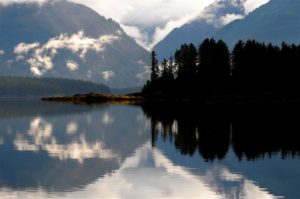

We are also an economic engine on the Pine Ridge Reservation. We are more than just a museum or art gallery. We take special pride in our work to strengthen cultural pride and celebrate, as well as preserve, the local Lakota culture and artistic tradition. One of the earliest cultural centers and museums located on an Indian reservation in the United States, The Heritage Center represents the rich and storied heritage of North America’s Native community and the skill and creativity that remain mainstays of the local Lakota and other Native American cultures. And because of this, the Center, located on the campus of Red Cloud Indian School in Pine Ridge, has become a model and source of inspiration for many of the Lakota people-and visitors from all across the globe-who wish to honor and celebrate the Lakota culture, Native art, and our historic, significant collection. There is no other place like The Heritage Center on the Pine Ridge Indian Reservation. History of Pastoral Ministry Since 1890Ī place for art, education, preservation, economic development, culture and history.Pounding Mill Overlook (milepost 413.2).Looking Glass Rock Overlook (milepost 417).Best Places on the Blue Ridge Parkway Near Asheville to See Thermal Inversion Both offer an unobstructed 360-degree vantage point of the surrounding mountains, and even if you don’t see thermal inversion in action, the views are quite remarkable. Along the Blue Ridge Parkway you may see these clouds at the base of Looking Glass Rock, or flowing up and over the ridge top at the Craggy Gardens Pinnacle Overlook. With mountaintops towering over 6,000 feet in elevation, there are multiple vantage points to watch the show. The best time of day to look for thermal inversion is early in the morning, just after the sun has risen.

Thermal inversion can occur any time of year, but it tends to happen most often in the fall, when the nights are cool and the days are warm. The Asheville area has drawn international attention from the likes of BBC Travel because of the opportunities for viewing thermal inversion. While this phenomenon is not unique to Asheville, the region’s climate, topography, and abundance of streams, rivers, and creeks make it one of the best places to see the thermal inversion show. As they climb up along the sides of the highest peaks, they move as if they’re alive.

When this happens, the clouds begin a slow ascent to the sky.

As the sun begins to rise, the warm air begins to mix with cold. Once that cool air mixes with the moisture from below it creates a sea of clouds in the valley. How does this happen? As the sun sets over Western North Carolina the cooler air from the mountaintops begins to dip into the lower elevations. Those fortunate enough to be standing in the right place, at the right time, can watch as these clouds swirl around the valley before beginning their ascent up the mountainside. It’s called thermal inversion, where low-lying clouds rest in the mountain valleys and undulate with a wave-like motion. The Blue Ridge Mountains are one of the best places in the world to behold a fascinating atmospheric phenomenon.


 0 kommentar(er)
0 kommentar(er)
